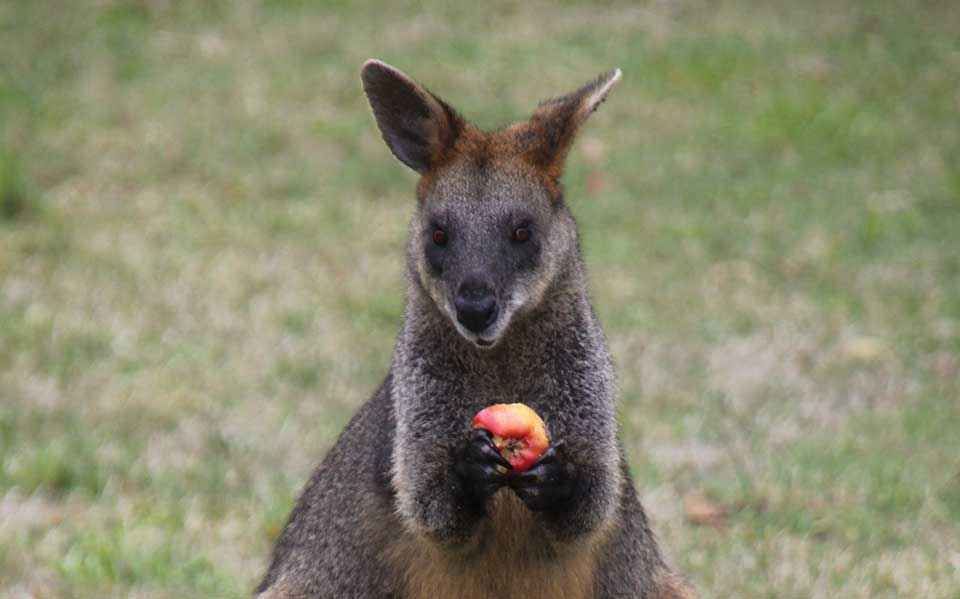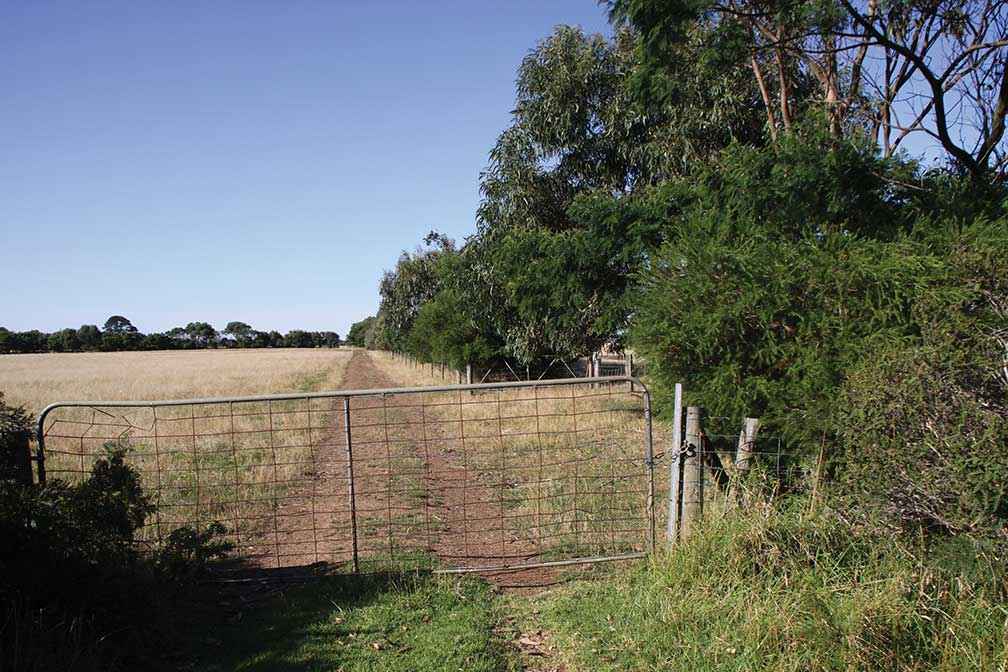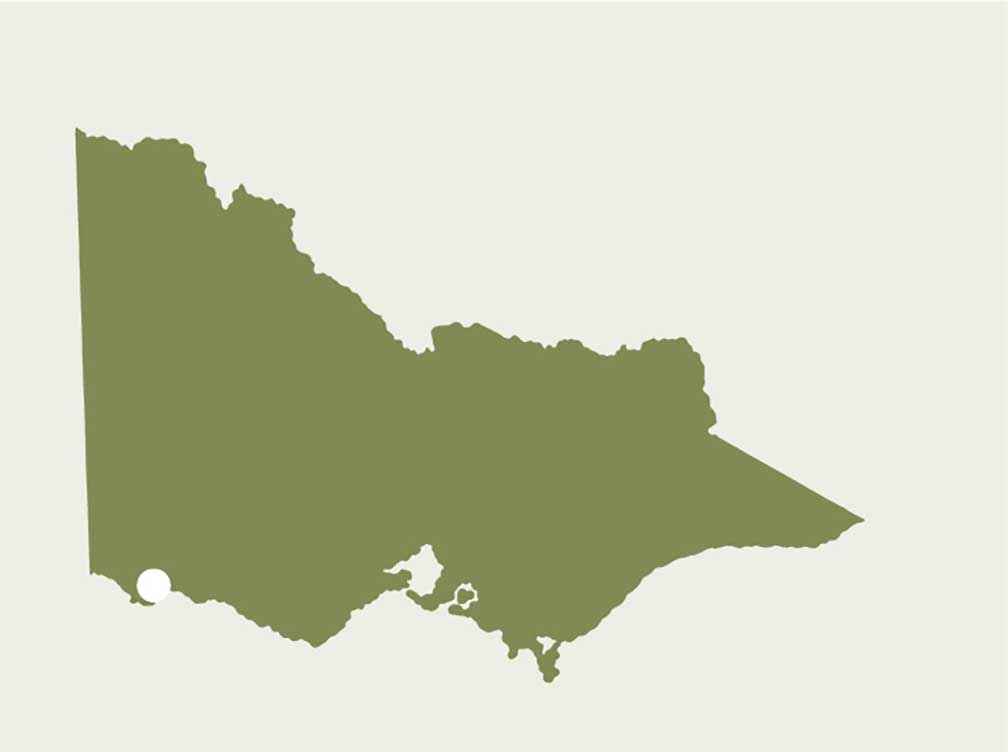Victorian Landcare Magazine - Winter 2017, Issue 69

For the past 35 years my wife and I have lived in a rural setting near Portland with 100 acres of forest as our backyard. Up until eight years ago we only saw red-necked wallabies (Macropus rufogriseus) in our forest but after three dry years black wallabies (Wallabia bicolor) started to appear.

Above: A shelterbelt planted in 2007 by the Tarragal Landcare Group on John and Brigitta Keiller’s property. International student volunteers assisted with the project.
Over the past few years the number of black wallabies in the area has noticeably increased. They are now seen in urban areas and are regularly killed by vehicles on roads. The local panel beating businesses have reported a significant increase in vehicles needing to be repaired as a result of collisions with black wallabies.
We believe that with declining food available due to a number of dry years, the black wallabies have moved south where food is more plentiful. The newcomers have certainly found the south-west coastal area to their liking with a ready supply of vegetation suitable for their browsing habits. We believe this change in their range has occurred as a direct result of climate change.
Our local Tarragal Landcare Group has a long history of successful revegetation projects. We have planted more than 100,000 tube stock in the local area with high survival rates.
Four years ago a substantial planting of tube stock failed due to grazing by black wallabies. The wallabies completely destroyed all of the blackwoods, manna gums and sheoaks with only some prickly moses and banksias surviving.
The group conducted an experiment by erecting a 2.4 metre fence around two plots on the same site. The plots were monitored and the results showed that all of the plants protected by the fence survived. The group is now planning to move the makeshift fence to other newly planted sites to deter the browsing wallabies until the plants are established.
The group is also working in cooperation with Greening Australia on direct seeding. With direct seeding the volume of plants that are established outweighs the effect of browsing. Observations of wallabies at direct seeding sites shows that browsing mainly occurs at the outer edges of the site while interior plants are left alone.
A browsing deterrent has also been used to protect plants at the early stage of growth. The deterrent is a natural based substance that sticks to leaves that are then dusted with fine iron filings. It can be administered with a normal seven litre garden spray.
Tarragal Landcare Group is purchasing a sprayer that will spray the deterrent substance onto large trees. A trial plot of 30 manna gums has been used to test the effectiveness of the deterrent in controlling koala grazing, which is also an issue in the area. Several other native species grazed by wallabies have been sprayed with positive results.
The change in the range of the black wallaby has influenced the planning and planting strategies for proposed revegetation projects in the south west. We must now carefully assess each site for the threat of browsing and determine how best to proceed.
Gary Milich is a member of the Tarragal Landcare Group.

Above: Location of Tarragal Landcare Group